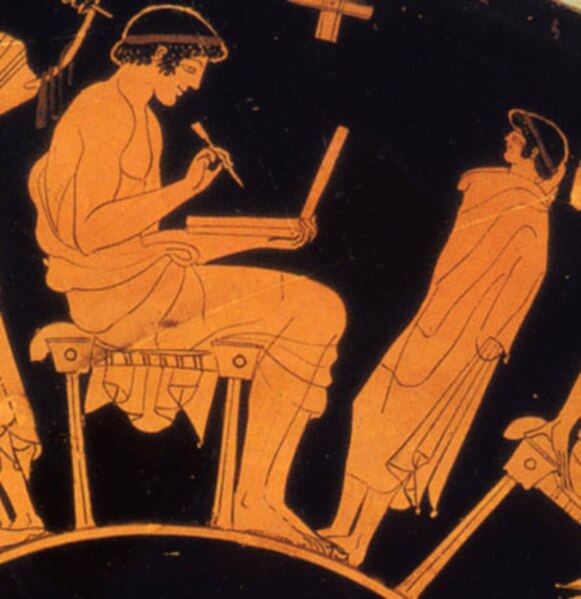A diptych is any object with two flat plates which form a pair, often attached by a hinge. For example, the standard notebook and school exercise book of the ancient world was a diptych consisting of a pair of such plates that contained a recessed space filled with wax. Writing was accomplished by scratching the wax surface with a stylus. When the notes were no longer needed, the wax could be slightly heated and then smoothed to allow reuse. Ordinary versions had wooden frames, but more luxurious diptychs were crafted with more expensive materials.
Ivory consular diptych of Areobindus, Byzantium, 506 AD, Louvre
Wax tablet and a Roman stylus
Barberini Ivory, Constantinople, 6th century, Louvre
Diptych with the Coronation of the Virgin and the Last Judgment, Metropolitan Museum of Art
A wax tablet is a tablet made of wood and covered with a layer of wax, often linked loosely to a cover tablet, as a "double-leaved" diptych. It was used as a reusable and portable writing surface in antiquity and throughout the Middle Ages. Cicero's letters make passing reference to the use of cerae, and some examples of wax-tablets have been preserved in waterlogged deposits in the Roman fort at Vindolanda on Hadrian's Wall. Medieval wax tablet books are on display in several European museums.
Wax tablet and a Roman stylus
Writing with stylus and folding wax tablet. painter, Douris, c. 500 BC (Berlin).
Roman scribe with his stylus and tablets on his tomb stele at Flavia Solva in Noricum






